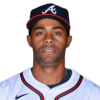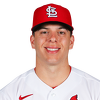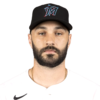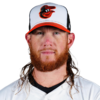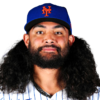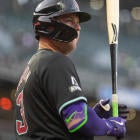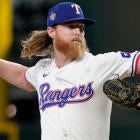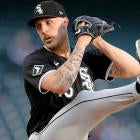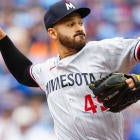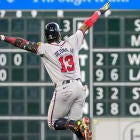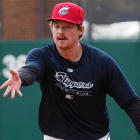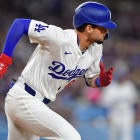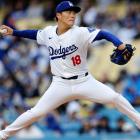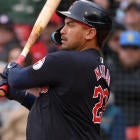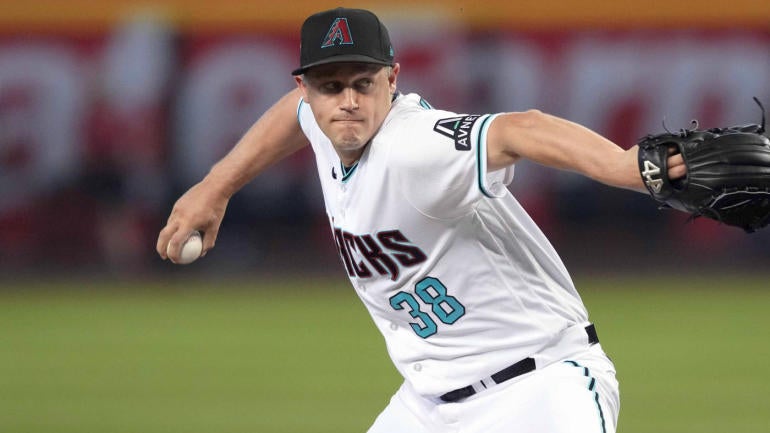
When a trend persists over several years, the expectation is that it will always be, particularly when it aligns with higher-order thinking and is backed up by data.
The trend at relief pitcher was toward closer committees. More accurately, it was toward deploying a team's best reliever in the highest-leverage spot, be it the ninth inning or otherwise, but the effect was the same for Fantasy Baseball—fewer reliable save sources. So every year, the few that remained would move further up draft boards, turning this single but essential resource into an extravagance, and it so bothered some people that there were calls to convert the saves category into saves plus holds in traditional 5x5 leagues.
I wonder what those people are saying now.
- Position Strategies: C | 1B | 2B | 3B | SS | OF | SP | RP
- Position Previews: C | 1B | 2B | 3B | SS | OF | SP | RP
- Position Tiers: C | 1B | 2B | 3B | SS | OF | SP | RP
What happened last year I don't claim to understand. It's like the league collectively confessed to its exhaustion with the whole committee approach, wanting to simplify in-game decision-making. The sentiment wasn't universal -- the Dodgers' Dave Roberts, for instance, still dabbled -- but it was widespread. Even the Rays' Kevin Cash and the Twins' Rocco Baldelli, the two managers most known for their abandonment of traditional bullpen roles, seemed newly committed to the idea.
So where does that put us in 2024? Well, in the simplest terms, we've gone from most major-league teams not having a definite closer to most teams having one. Moreover, the vast majority of these definite closers are genuinely their team's best choice for the role, having claimed it by merit rather than happenstance. I see no reason, then, why it should change (other than that I don't know why it started in the first place).
I'd like to say the escalating prices for closers have normalized as a result, but I'm not completely convinced of that. You rarely see one go in Round 3 anymore, but Round 4 is still common for the best, and by the end of Round 8, adjusting ADP for a 12-team league, a full 10 have been drafted. I specify the number of teams because the deeper the league, the more likely that surplus becomes a scarcity again and the higher the closer premium overall. But in a typical league of 10 or 12 teams, I think there are more than enough closers to go around now -- and potentially of a higher quality than in the heyday of bullpen roles.
It's also once again feasible to come out of a Rotisserie draft with three quality closers instead of just two, and that's always my preference -- quality over quantity, particularly when the quality is high anyway. And in Head-to-Head leagues where each team has just two relief pitcher spots to fill, there's no reason to pay up for a closer at all. You can just take the best of what's left at the end (or very late, anyway).
| 2024 ADP | 2023 ERA | 2023 WHIP | 2023 K/9 | |
|---|---|---|---|---|
Devin Williams
MIL RP
| 46 | 1.53 | 0.92 | 13.4 |
Josh Hader
HOU RP
| 57 | 1.28 | 1.10 | 13.6 |
Emmanuel Clase
CLE RP
| 58 | 3.22 | 1.16 | 7.9 |
Edwin Diaz
NYM RP
| 62 | 1.31^ | 0.84^ | 17.1^ |
Camilo Doval
SF RP
| 71 | 2.93 | 1.14 | 11.6 |
Jhoan Duran
MIN RP
| 75 | 2.45 | 1.14 | 12.1 |
Raisel Iglesias
ATL RP
| 84 | 2.75 | 1.19 | 11.0 |
Jordan Romano
TOR RP
| 85 | 2.90 | 1.22 | 11.0 |
David Bednar
PIT RP
| 86 | 2.00 | 1.10 | 10.7 |
Alexis Diaz
CIN RP
| 94 | 3.07 | 1.19 | 11.5 |
Paul Sewald
ARI RP
| 108 | 3.12 | 1.15 | 11.9 |
Andres Munoz
SEA RP
| 115 | 2.94 | 1.27 | 12.3 |
Ryan Helsley
STL RP
| 116 | 2.45 | 1.06 | 12.8 |
Pete Fairbanks
TB RP
| 123 | 2.58 | 1.01 | 13.5 |
Evan Phillips
LAD RP
| 125 | 2.05 | 0.83 | 9.7 |
Tanner Scott
MIA RP
| 145 | 2.31 | 0.99 | 12.0 |
Craig Kimbrel
BAL RP
| 155 | 3.26 | 1.04 | 12.3 |
Kenley Jansen
BOS RP
| 159 | 3.63 | 1.28 | 10.5 |
I considered splitting this group of 18 into two smaller groups both for ease of consumption and to better account for the varying degrees of confidence. But I think keeping it large creates a clearer contrast to last year, when this same group, defined in this same way, was only 11 names long -- and one was Daniel Bard, which, in retrospect, was a major stretch.
No doubt, Josh Hader, Devin Williams and Edwin Diaz are better than Raisel Iglesias, David Bednar and Alexis Diaz, who are better than Tanner Scott, Craig Kimbrel and Kenley Jansen. But the key distinction is assurance level rather than output potential, particularly since saves are far and away the most important contribution here. But notice the K/9 rates. Other than Diaz, Emmanuel Clase and Evan Phillips, they're all in the same range. Using strikeouts as a stand-in for upside, which is pretty much all we can do over small relief pitcher samples, these 18 are all potentially top-10 relievers. It's why I say they became closers by merit rather than happenstance.
If I were to divide this group in two, the line would be between Paul Sewald and Andres Munoz. Everybody above it is about as safe as a reliever can get. Everybody below it is a health and/or implosion risk. In the end, I want two from this group. One from the safer side would be optimal, and it usually ends up being Sewald, but I've come out of drafts with Tanner Scott or Craig Kimbrel as my top closer and was more or less at peace with it.
| 2024 ADP | 2023 ERA | 2023 WHIP | 2023 K/9 | |
|---|---|---|---|---|
Clay Holmes
NYY RP
| 143 | 2.86 | 1.17 | 10.1 |
Adbert Alzolay
CHC RP
| 162 | 2.67 | 1.02 | 9.4 |
Jose Alvarado
PHI RP
| 204 | 1.74 | 1.16 | 13.9 |
Jose Leclerc
TEX RP
| 207 | 2.68 | 1.14 | 10.6 |
The distinction between this small group of four and the large group of 18 that preceded it is a subtle one, and part of me wants to group them together to drive the point home even harder that the closer landscape is way more promising than we've seen in recent years. In fact, I did count Adbert Alzolay among the Surefire Closers before the Cubs went and signed Hector Neris, muddying the waters ever so slightly.
And that's the gist of this group: I'm mostly sold on their closer bona fides, but things are just a little bit muddy. They're muddiest for Jose Alvarado, who has long been billed as a closer in waiting and would seem to be the front-runner with Craig Kimbrel now in Baltimore. But the Phillies have played things close to the vest. If that changes, then Alvarado will fly up the rankings, probably even ahead of Kimbrel. The one who's closest to moving up currently is Clay Holmes, who the ADP shows is drafted ahead of some of the Surefire Closers. It's true the Yankees don't have an obvious alternative for him, which makes him appear safe, but they've never been totally sold on him in the role, toying with alternatives at the first sign of trouble.
Jose Leclerc was nails for the Rangers on their march to a World Series championship and I think is safer than some people suspect. But he does have a shaky health history and sometimes struggles to throw strikes, which could potentially be his undoing.
| 2024 ADP | 2023 ERA | 2023 WHIP | 2023 K/9 | |
|---|---|---|---|---|
Alex Lange
DET RP
| 213 | 3.68 | 1.33 | 10.8 |
Kyle Finnegan
WAS RP
| 226 | 3.76 | 1.30 | 8.2 |
Carlos Estevez
LAA RP
| 240 | 3.90 | 1.49 | 11.3 |
Will Smith
KC RP
| 306 | 4.39 | 1.06 | 8.6 |
Justin Lawrence
COL RP
| 448 | 3.72 | 1.35 | 9.4 |
These may be closers (emphasis on the "may"), but they're bad closers. Given the damage they could inflict on your ERA and WHIP, you may rue the day you drafted them, particularly if they go on to lose the job anyway. The safest among them are probably Alex Lange and Will Smith, whose teams don't offer a clear alternative, but then again, it's not like Smith is truly confirmed for the role.
Along with those two, I'd also be OK drafting Kyle Finnegan as a third closer just to give myself that small advantage over the teams who draft only two (quantity over quality, right?), but he may have a hard time holding off Hunter Harvey in Washington. I'm all but completely out on Carlos Estevez and Justin Lawrence. The former imploded in the second half and has a much better reliever behind him in Robert Stephenson. The latter is more of a middle reliever who happens to spend half his time at Coors Field.
| 2024 ADP | 2023 ERA | 2023 WHIP | 2023 K/9 | |
|---|---|---|---|---|
Ryan Pressly
HOU RP
| 175 | 3.58 | 1.07 | 10.2 |
Robert Stephenson
LAA RP
| 229 | 3.10 | 0.88 | 13.2 |
Yennier Cano
BAL RP
| 248 | 2.11 | 1.00 | 8.1 |
Robert Suarez
SD RP
| 254 | 4.23 | 0.90 | 7.8 |
Bryan Abreu
HOU RP
| 258 | 1.75 | 1.04 | 12.5 |
Mason Miller
OAK SP
| 262 | 3.78 | 1.20 | 10.3 |
Matt Brash
SEA RP
| 281 | 3.06 | 1.33 | 13.6 |
Jason Adam
TB RP
| 307 | 2.98 | 1.01 | 11.4 |
Yuki Matsui
SD RP
| 321 | 1.57# | 0.89# | 11.3# |
Hunter Harvey
WAS RP
| 335 | 2.82 | 0.94 | 9.9 |
David Robertson
TEX RP
| 340 | 2.75 | 0.95 | 8.7 |
Brusdar Graterol
LAD RP
| 356 | 1.20 | 0.97 | 6.4 |
Hector Neris
HOU RP
| 370 | 1.71 | 1.05 | 10.1 |
John Brebbia
CHW RP
| ----- | 3.99 | 1.17 | 11.0 |
To say Robert Stephenson is a better reliever than Carlos Estevez is an understatement. He might have been the best in all of baseball after joining the Rays last June, going on to deliver a 2.35 ERA, 0.68 WHIP and 14.1 K/9 with the help of a new cutter. The Angels inked him to a three-year deal this offseason, and it seems like only a matter of time before he overtakes the erratic Estevez for ninth-inning duties. GM Perry Minasian has continued to endorse Estevez as the team's closer even after the signing but has also said the decision is ultimately up to manager Ron Washington.
Notably, Stephenson is the only non-closer worth drafting ahead of his team's projected closer, but he's not the only pitcher from this group with widespread Fantasy appeal. The Athletics are going to try prospect Mason Miller in relief this spring, and his strikeout potential would make him a natural fit for ninth-inning duties if it sticks. The Padres have been purposely non-committal about their closer, but newly signed left-hander Yuki Matsui starred in the role in Japan. It's between him and Robert Suarez, but my money is on Matsui, to the point I'd draft him ahead of any reliever in the previous group. The White Sox have nothing but bad options after trading Gregory Santos to the Mariners, but I think the best of them is John Brebbia. It may be that no one in that bullpen gets double-digit saves, though.
The rest of these pitchers are only stepping into the closer role if something goes wrong for the incumbent, with the likeliest case being Hunter Harvey, I'd say. He at times last year looked like he had already overtaken Kyle Finnegan, but he couldn't stay healthy.
| 2024 ADP | 2023 ERA | 2023 WHIP | 2023 K/9 | |
|---|---|---|---|---|
Cole Ragans
KC RP
| 103 | 3.47 | 1.16 | 10.6 |
Michael King
SD RP
| 150 | 2.75 | 1.15 | 10.9 |
Nick Pivetta
BOS RP
| 192 | 4.04 | 1.12 | 11.5 |
Ryan Pepiot
TB RP
| 195 | 2.14 | 0.76 | 8.1 |
Sean Manaea
NYM RP
| 338 | 4.44 | 1.24 | 9.8 |
Frankie Montas
CIN RP
| 365 | 4.05^ | 1.25^ | 8.9^ |
Chris Paddack
MIN RP
| 383 | 4.03^ | 1.21^ | 8.1^ |
Zack Littell
TB SP
| 467 | 4.10 | 1.18 | 7.4 |
Nick Martinez
CIN RP
| 520 | 3.43 | 1.26 | 8.7 |
This group mostly just applies to Head-to-Head points leagues, where saves are non-essential, going into the same scoring bucket as everything else, and a reliable starting pitcher can outscore the typical closer. These starting pitchers can slot into a relief pitcher spot, just like a closer. So will any of them be reliable?
Several have the upside for it. It's a good year for SPARPs (starting pitchers as relief pitchers) overall, and the chief among them is Cole Ragans, who was nothing short of an ace after joining the Royals rotation for good last August. Michael King also showed with a late-season transition that his stuff holds up well in a starting role, and it made him one of the key pieces in the Juan Soto trade this offseason. Likewise, the Rays deliberately targeted Ryan Pepiot in the Tyler Glasnow trade, apparently buying into his control gains. Nick Pivetta, meanwhile, may have finally learned to harness is stuff in a hybrid role for Red Sox. I'm high on all of them but most likely to draft Ragans and Pivetta for the strikeout upside.
Specifically in points leagues, I also wouldn't mind taking a late-round stab at Frankie Montas or Chris Paddack. But are coming off long-term injuries, which put them out of sight and out of mind, but both have demonstrated high-end potential in the past.













